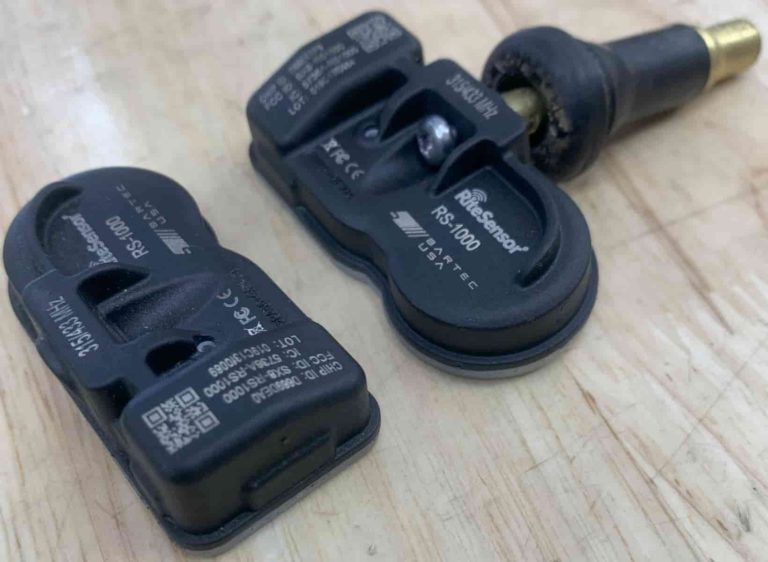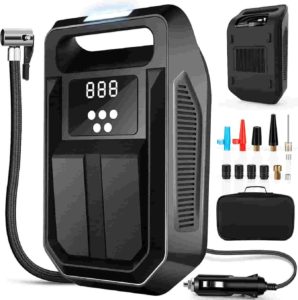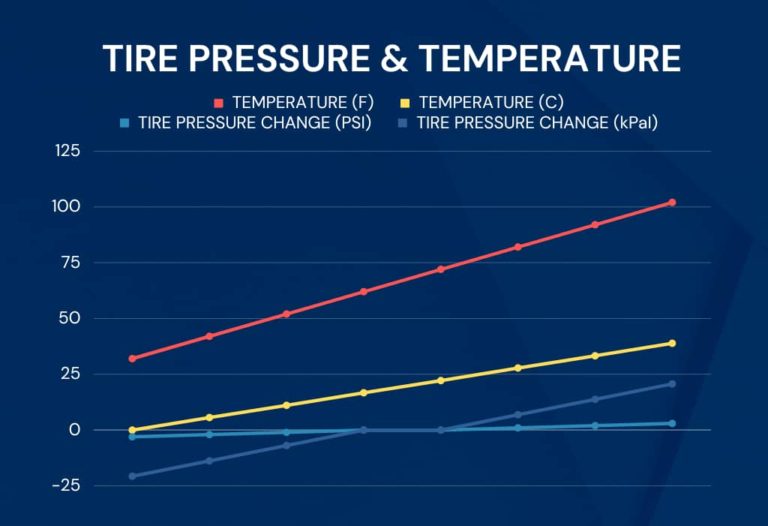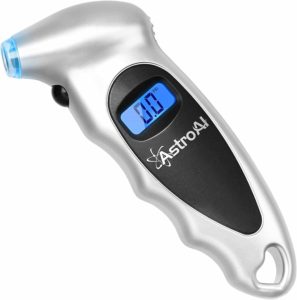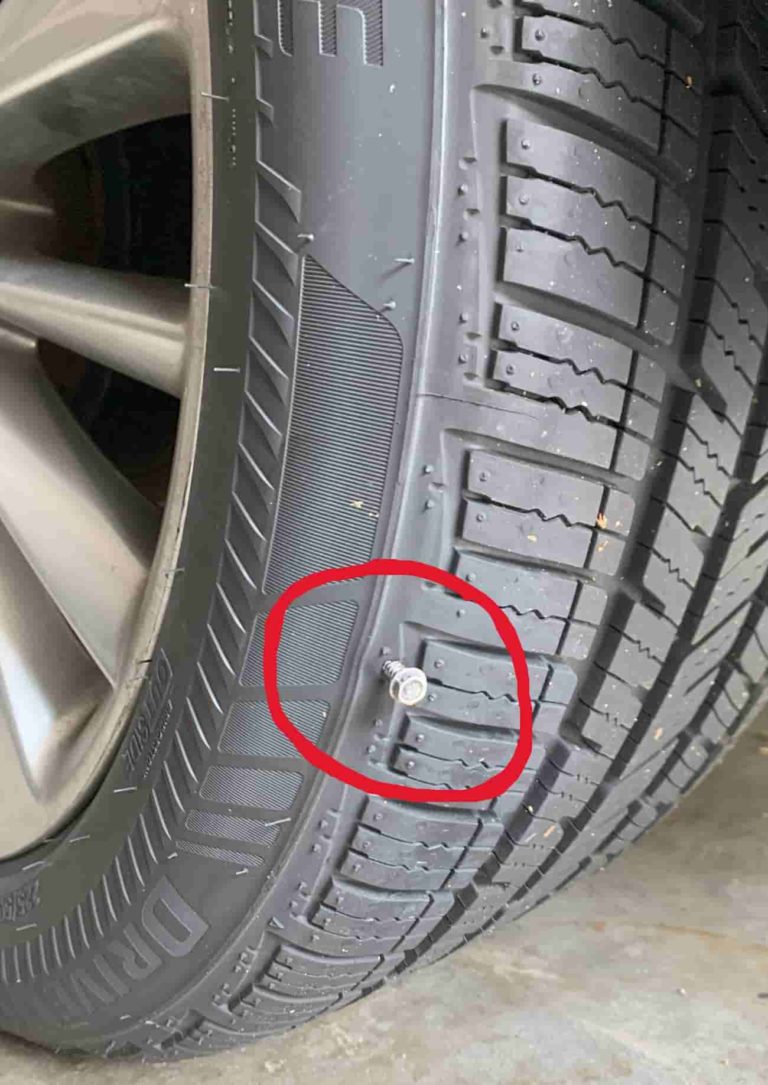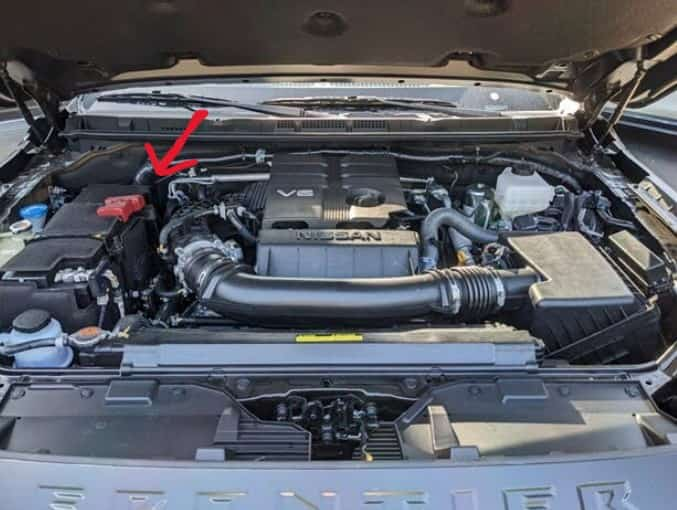Nissan Frontier TPMS
Navigating the labyrinth of your Nissan Frontier’s Tire Pressure Monitoring System (TPMS) can seem daunting, but fear not! This comprehensive guide will illuminate your path, providing step-by-step instructions on resetting the tire pressure light, understanding how the system works, and troubleshooting common issues. Whether you’re dealing with a stubborn warning light, a mysterious pressure drop, or a new set of sensors, we’ve got you covered. So buckle up and let’s dive into the world of tire pressure management, where safety meets efficiency on the road of automotive care.
How To Reset the Nissan Frontier Tire Pressure Light
The Nissan Frontier does not have a tire pressure reset button.
Park the vehicle in a safe place and turn the engine off.
Adjust the tire pressure in all four tires to the recommended COLD tire pressure, 35 Psi.
After adjusting the tire pressure, drive the vehicle at speeds above 16 MPH (25 km/h). The low tire pressure warning light does not automatically turn off when the tire pressure is adjusted. After the vehicle speed reaches 16 MPH (25 km/h), the light will turn off.
If the low tire pressure warning light flashes for approximately 1 minute and then remains on after you turn the ignition switch to the ON position, the TPMS is not functioning properly. (read more about TPMS malfunction below)
If the light doesn’t go off right away, re-check your tire pressure to make sure they are all at the exact pressure you set them to. If the pressure has decreased, you probably have some sort of leak in that tire.
If your tires are not losing air and the tire light still won’t go out, try overfilling your tires by about 10 Psi. So, fill them to 45 Psi and then drive the car for a few minutes. The tire light should reset. Remember: DO NOT leave the tires at this level, release the extra 10 Psi afterwards.
NOTE: The tire pressure monitoring system (TPMS) will not turn off the low tire pressure warning light until the tire pressure is set to the recommended pressure and the vehicle is driven at speeds above 16 MPH (25 km/h). If you’ve completed these steps and the tire light STILL won’t go out, There is only one of three things that can be the problem. Either have a faulty tire pressure sensor in one of your wheels OR you have a leak OR your receiver module (control unit) is not communicating with your sensors (this is the least of all likely and is rare).
2023 Nissan Frontier Tire Pressure
TIRE SIZE | FRONT PSI | REAR PSI |
265/70R16 | 35 | 35 |
265/65R17 | 35 | 35 |
265/70R17 | 35 | 35 |
FULL SIZE SPARE | 35 | 35 |
SPARE TIRE | 60 | 60 |
Nissan Frontier Tire Settings
How to Reset the Tire Maintenance Light
Park the vehicle in a safe location and apply the parking brake.
Turn the ignition switch to the ON position, but do not start the engine.
Use the steering wheel switches to select the “Settings” menu on the vehicle information display.
Scroll down and select “Vehicle Settings“, then “Tire“, and finally “Tire Maintenance“.
In the “Tire Maintenance” menu, select “Reset“, then press the OK button.
The tire maintenance reminder light should now be reset.
How to Change Tire Pressure Units
Press the “MENU” button on the control panel to bring up the main menu on the vehicle information display.
Use the toggle switch to navigate to “Settings“.
In the “Settings” menu, navigate to “Tire Pressures“.
In the “Tire Pressures” menu, you can select the desired unit for tire pressure. The options are PSI (Pounds per Square Inch), kPa (Kilopascals), or bar.
After selecting the desired unit, press the “OK” button to confirm your selection. The new unit will now be displayed when you check your tire pressures.
How Does the Nissan Frontier TPMS Work?
The Nissan Frontier’s Tire Pressure Monitoring System (TPMS) is a safety feature that warns the driver if one or more tires don’t have enough air. Here’s a simple breakdown of how it works:
Sensors: Each tire, including the spare (if it’s a full sized spare), has a sensor mounted inside that measures the tire’s pressure. These sensors are battery-powered and transmit data wirelessly.
Data Transmission: The sensors send the tire pressure data to the vehicle’s onboard computer system. This happens continuously while the vehicle is in motion.
Monitoring: The vehicle’s computer system constantly monitors the pressure in all tires. It compares the current pressure to Nissan’s recommended pressure levels.
Warning Light: If the pressure in one or more tires falls below the recommended level, the TPMS warning light on the dashboard illuminates. This is a signal to the driver that at least one tire is underinflated.
Direct Readout: The 2023 Nissan Frontier also provides a direct readout of the pressure in each tire, allowing the driver to see exactly which tire is underinflated.
Action Required: When the TPMS warning light comes on, the driver should stop as soon as it’s safe to do so and check the pressure in all tires. Make sure all tires are at the 35 Psi Nissan recommends.
Resetting the System: After correcting the tire pressure, the TPMS needs to be reset.
Maintenance: The TPMS sensors’ batteries typically last several years but will eventually need to be replaced. You cannot replace just the battery; the entire sensor must be replaced. If the TPMS warning light flashes on and off, this may indicate a TPMS malfunction.
Why is the Tire Light Flashing?
The Nissan Frontier’s tire pressure monitoring system also has a malfunction indicator to alert you when something is wrong with the system itself. The indicator uses the same yellow exclamation point as the low tire pressure light. The difference is that, if there is a problem with the system, the light will flash for approximately one minute before staying on. This flashing or blinking will happen every time you start your Frontier until the issue is resolved. When your tire light is flashing your Frontier will not be able to give you accurate pressure readings. Basically, a blinking tire pressure light means there is a malfunction within the TPMS itself, rather than an air pressure issue. This is usually due to a faulty pressure sensor in one of your tires (a dead battery) or driving with the spare tire. (if the spare doesn’t have a sensor in it) To figure out which sensor is malfunctioning or faulty, use a TPMS diagnostic tool and scan each sensor for diagnostic information or bring your car to a professional.
What Causes a TPMS Malfunction?
Using non Nissan wheels or tires.
Devices that use similar radio frequencies can interfere with the TPMS, leading to operational issues. Such interference can originate from various sources, even something as commonplace as a radio or a nearby store’s alarm system.
If your Frontier’s windows are heavily tinted, it could potentially interfere with the radio signals transmitted between the TPMS sensors and the receiver.
If there is substantial snow or ice accumulation on or surrounding the tire valves
If the tire pressure is extremely high.
If wheels without tire pressure sensors are installed on the car. Most spare tires do not have sensors in them. (if you have a full size wheel, it has a sensor)
If new tire pressure sensors are installed without registering the new sensor IDs with the Frontier’s receiver module/ECU.
Understanding the Causes: Why the Tire Light Comes On
Seasonal temperature changes: A drop in ambient temperature can cause tire pressure to decrease, triggering the warning light.
Tire puncture or leak: A sharp object or road debris like a nail or screw may puncture a tire, causing air loss which will of course activate the warning light.
Faulty tire pressure sensor: Damaged or malfunctioning sensors may provide inaccurate readings, resulting in a false alert. The only way to determine which sensor is faulty is to scan each sensor with a TPMS diagnostic tool.
Valve stem issues: A damaged or leaking valve stem can lead to gradual pressure loss and eventual activation of the tire pressure light. They make kits to replace the rubber gasket that usually goes bad.
Tire damage: Impact from potholes or hitting a curb can cause structural damage like tire bubbles, leading to pressure loss.
Sensor battery life: TPMS sensors are battery-powered, and over time, batteries die. (they usually last anywhere from 5-10 years) This will cause the tire pressure light to turn on. Again, you must use a diagnostic tool to determine which sensor is dead or dying.
Recent tire rotation or replacement: If the tires have been recently rotated or replaced, the TPMS may need recalibration to avoid false alerts. Sometimes the vehicle’s computer may think the front tires are in the rear and rear in the front after a rotation.
Wheel or rim issues: Damaged, corroded, or cracked wheels or rims can lead to air leaks and pressure loss. This is very common with low profile tires.
Altitude changes: Climbing or descending in elevation can affect tire pressure and trigger the TPMS warning. An additional 1.5 Psi per Km above sea level is required.
Natural pressure loss: Tires lose air pressure over time due to temperature changes and permeation. Tire dry-rot will happen to tires that sit.
Electrical problems or software issues within the car’s TPMS system. Occasionally the system may have a software update from Nissan.
Snow Tires: If you have a separate pair of wheels/rims for your snow tires, you can either transfer the sensors from your summer wheels or acquire an additional set of 4 sensors for the second pair of wheels/rims. However, if you are using the same wheels for both sets of tires, there is no need to be concerned about this.
Identifying the Source of Your Tire Leak
First, determine which tire is low on air. Get a spray bottle and fill it with water and soap (windex works too). Spray down the entire tire, including the bead of the tire (where the tire meets the wheel), and the valve stem. Wait a few seconds and look over the entire tire for small bubbles. When air is leaking from a tire with soapy water all over it, the leak appears as small bubbles pushing from the puncture.
Is it Safe to Drive the Frontier with Low Tire Pressure?
While it’s typically acceptable to drive for brief periods with the TPMS light illuminated, it’s crucial to rectify the problem ASAP. Driving for prolonged periods with incorrect tire pressure can lead to numerous adverse scenarios. We recommend identifying the root cause of the issue. Got a slow leak? A nail? Bead seal issues? Is the tire leaking slow or fast? Figure out the problem, gauge the risk, and act fast. Safety first!
What Happens when Tires are Underinflated or Overinflated?
When the tires are underinflated or overinflated in your Nissan Frontier, several issues can arise:
Underinflated Tires:
Uneven tire wear, particularly on the edges of the tread, reducing tire lifespan.
Decreased fuel efficiency due to increased rolling resistance.
Compromised handling and stability, especially during cornering and emergency maneuvers.
Increased braking distances, affecting the vehicle’s ability to stop quickly and safely.
Higher risk of tire failure, which can lead to accidents or blowouts.
Overinflated Tires:
Center tread wear that occurs faster, reducing traction and handling performance.
Harsh and uncomfortable ride due to reduced shock absorption.
Decreased braking performance, potentially extending stopping distances.
Increased risk of tire blowout, especially when driving over potholes or road hazards.
Compromised tire integrity and safety, increasing the likelihood of tire failure.
Does the Weather Affect Tire Pressure?
In the Nissan Frontier, as with any vehicle, tire pressure is significantly influenced by weather conditions, particularly temperature changes. When the weather cools down, the air inside the tires contracts, leading to a decrease in tire pressure. Conversely, in warmer weather, the air expands, causing the tire pressure to increase. This is why the Tire Pressure Monitoring System (TPMS) in your Nissan Frontier may signal a warning during a sharp drop in temperature, as it could interpret this as a tire being under-inflated. It’s crucial to check and adjust your tire pressure with the changing seasons to ensure optimal vehicle performance and safety. A rule of thumb states that for every 10-degree Fahrenheit change in temperature, tire pressure will decrease or increase by approximately 1 psi in the same direction.
Steps to Adjust Tire Pressure
Make sure the tires are cold. If your vehicle has been driven, wait at least three hours before checking the tire pressure.
Remove the valve cap from the tire.
Press the tip of the tire pressure gauge onto the valve and read the pressure.
If the tire pressure is below the recommended level, fill the tire with air until the recommended pressure is reached. If the tire pressure is above the recommended level, release air until it reaches the recommended pressure. (Press the metal stem in the center of the tire valve. You can use any object like a screwdriver to do this. Be gentle.)
After adjusting the tire pressure, don’t forget to put the valve caps back on to prevent leaks and keep dirt and moisture out.
Repeat this process for each tire, including the spare if applicable.
What is "Cold Pressure"?
For a precise tire pressure measurement on your Nissan Frontier, it’s best to check it after your vehicle has been idle for some time, ideally in the morning. This is referred to as checking the “cold pressure” when the vehicle hasn’t been driven for roughly three hours or more. As you drive, the tires heat up, making the air inside expand and potentially skewing the pressure readings to the high side. Therefore, avoid adjusting tire pressure immediately after driving, or you might end up with tires that are overinflated!
Are Tire Plugs Safe?
Yes. I have personally plugged thousands of tires and have rarely come across any issues. Tire plugs provide a safe and effective solution for repairing punctures in the tread area of a tire. They are designed to be inserted directly into the hole caused by a foreign object like a nail or screw, effectively sealing the puncture. The plug material is typically made of a durable rubber-like compound that is resistant to the harsh conditions inside a tire, including heat and pressure changes. When installed correctly, a tire plug can last for the remaining life of the tire, allowing you to continue driving safely without the immediate need for a new tire. Do not use a plug in the sidewall of a tire.
How to Install & Calibrate New Tire Sensors
Installing new TPMS sensors into a wheel takes a few key steps. It’s usually done during tire changes. After removing the tire from the wheel, the old sensor is carefully removed. The base of the sensor is removed and then the valve stem is pulled out through the top of the wheel. Next, the new sensor is fit into place. It’s crucial to ensure that the new sensor is compatible with your vehicle’s TPMS system. Once the new sensor is installed and the tire is refitted, the sensor needs to be registered to the vehicle’s Electronic Control Unit (ECU). This process, often referred to as “relearning,” involves programming the new sensor’s unique ID number into the ECU so that it recognizes signals from the new sensor. (we recommend taking a picture of each new sensor before installing them so that you have the ID number accessible) This process varies by vehicle, some newer vehicles can do this process on their own but most vehicles require using a TPMS relearning tool. The general idea is that you scan each of the 4 mounted sensors and then allow the tool to sync with the vehicle’s ECU. Always refer to the vehicle’s manual or manufacturer’s guidelines for precise instructions.
Reset the Entire Computer System
If you have tried everything and nothing else seems to work, disconnect the main 12 volt battery. Disconnect the negative terminal first to avoid any short circuits (you’ll need a 10 or 12mm wrench). This will cause the ECU (engine control unit) to lose power, resulting in any error codes being stored by the computer to be erased (The tire pressure light is an error code). Use this method only if you are out of options. Disconnecting the battery will make the computer lose its adaptive memory settings. This means that after reconnecting the battery your Frontier may need to go through a “relearning” process. This is where it recalibrates sensors and actuators to operate optimally. To complete the relearn, drive the frontier for 30 minutes or more.
Conclusion
In conclusion, understanding and managing the Tire Pressure Monitoring System (TPMS) of your Nissan Frontier is an essential aspect of vehicle maintenance. It not only ensures your safety on the road but also contributes to the longevity and efficiency of your vehicle. From resetting the tire pressure light to troubleshooting common issues, this guide has equipped you with the knowledge you need. Remember, regular checks and maintenance are key to keeping your vehicle in optimal condition. So, keep this guide handy, and let’s hit the road with confidence and peace of mind. Safe driving! Everything in this article is applicable to all Nissan Frontier models and trims. Including Frontier 4×2 and 4×4 drivetrains as well as Frontier King Cab S, Frontier Crew Cab S, Frontier King Cab SV, Frontier Crew Cab SV, Frontier Crew Cab Midnight Edition, Crew Cab Pro-X, Frontier Crew Cab Longbed SV, Frontier Crew Cab Pro-4X.
Please note that this blog post contains Amazon affiliate links. This means that if you make a purchase through one of these links, we at TPMSRESET.com may earn a small commission at no extra cost to you. We only recommend products that we personally use and believe in. Thank you for supporting us.

